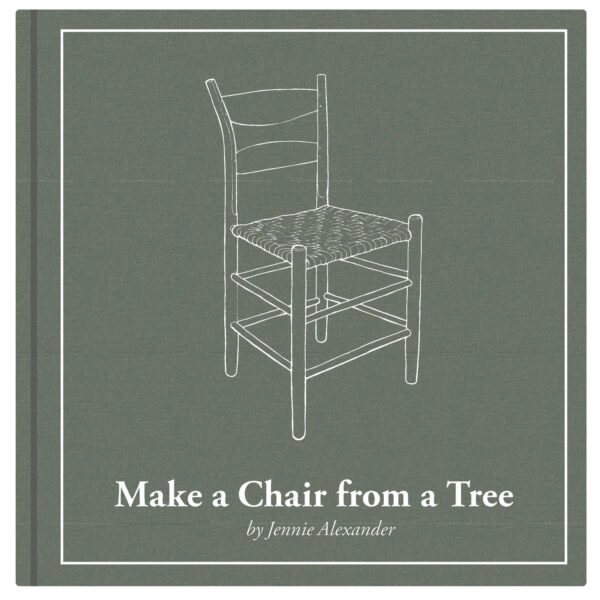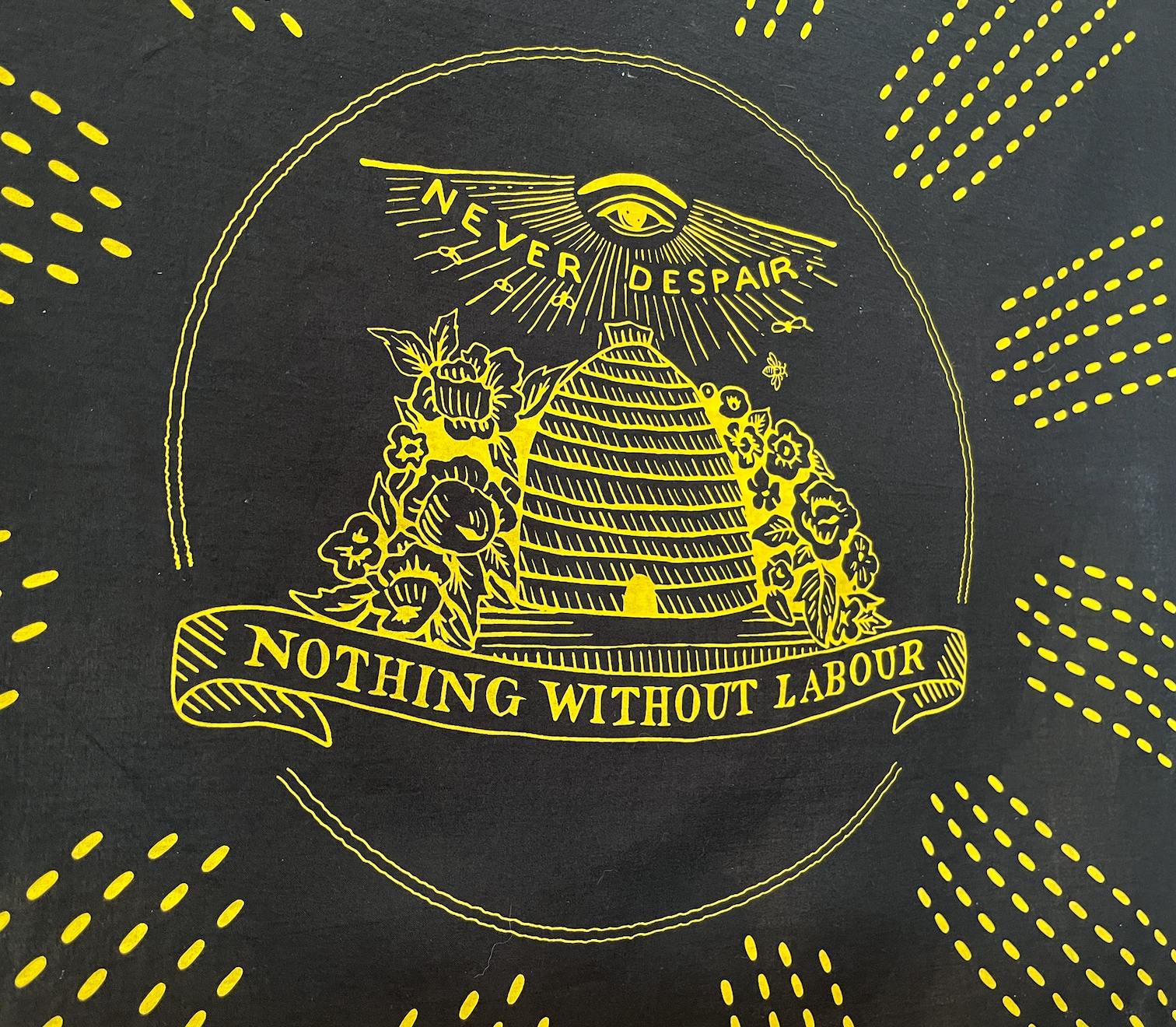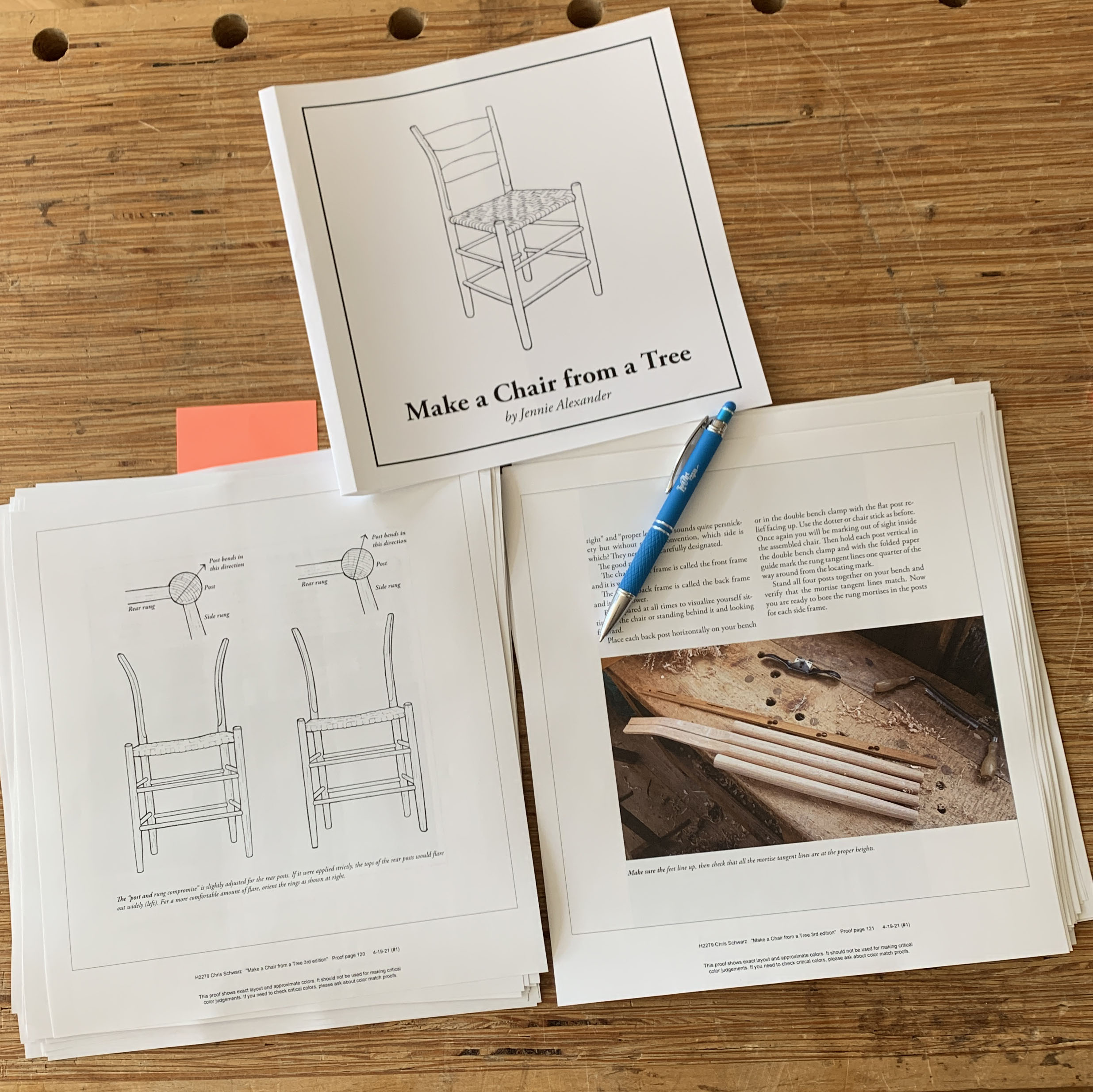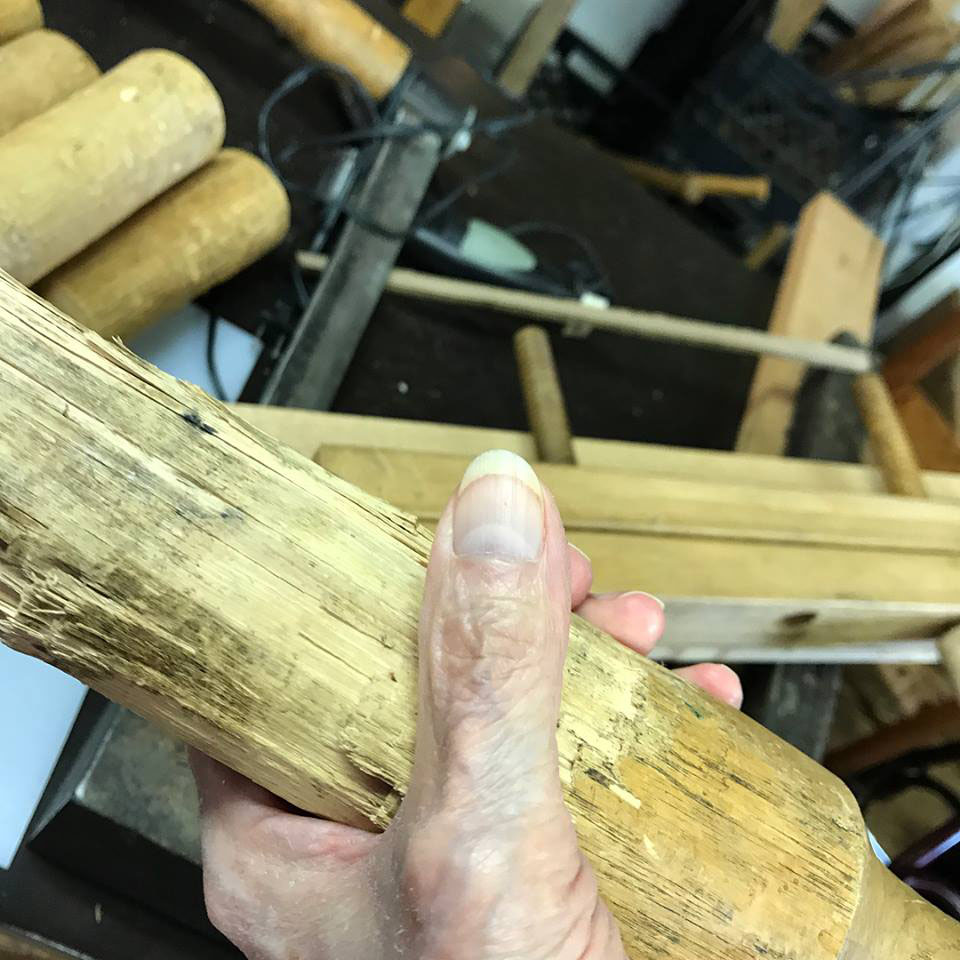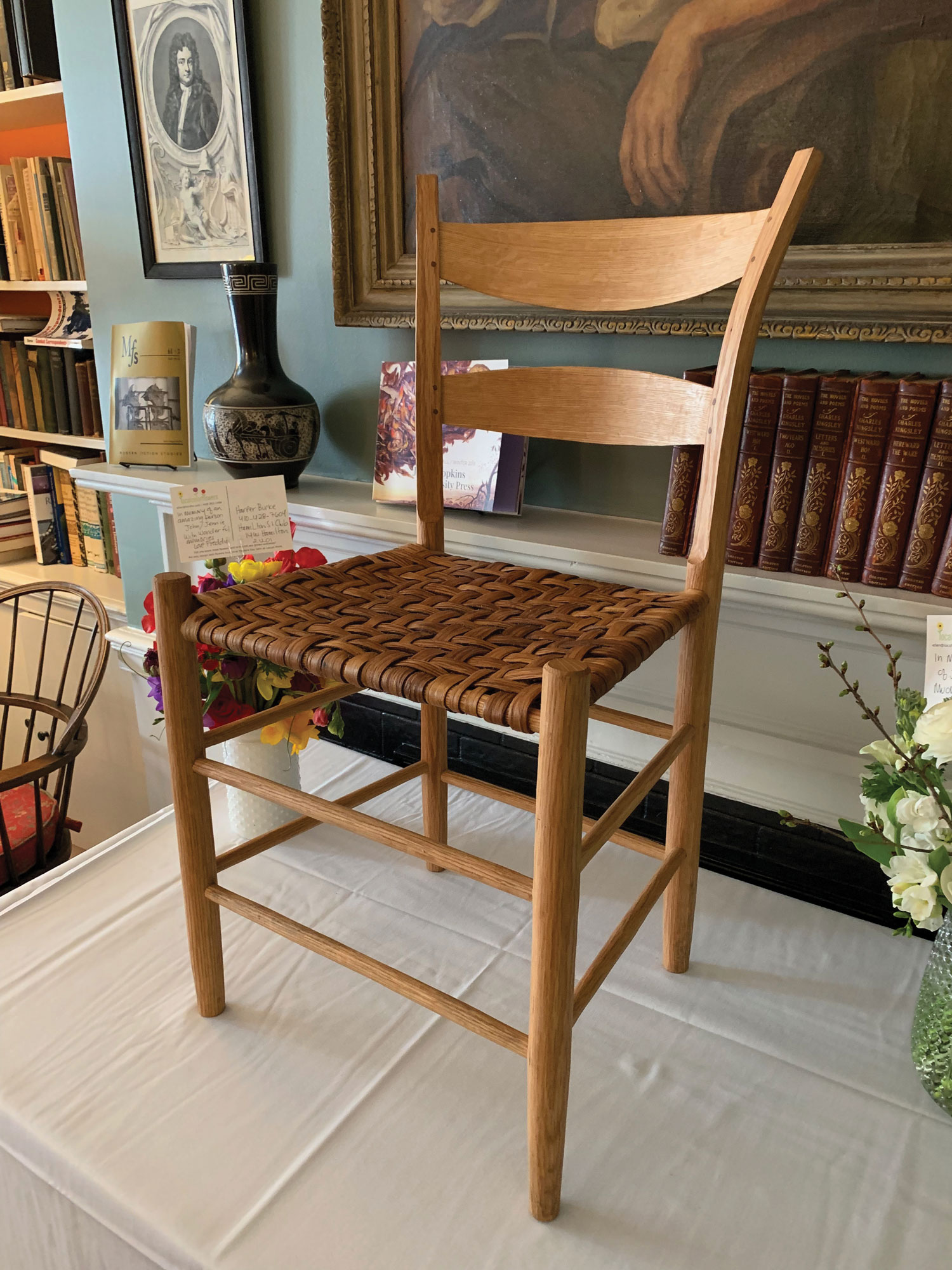
After Jennie Alexander died in 2018, she left a house full of tools, chairs and bits and pieces from her long life of woodworking, research and writing. For several months, her friends and family sorted through the possessions and distributed them so they would do the most good.
Shortly thereafter, we traveled to Jennie’s Baltimore home for one last time: to shoot step photos for the third and final edition of “Make a Chair From a Tree.” As we were leaving her home on Light Street, Jennie’s daughter Harper implored us to take some of the objects that no one else would.
Otherwise they were going to charity or the resale shop.
Among the few things I took was this hacking knife. Clearly blacksmith-made, it’s a heavy sucker at 1 lb. 4 oz. It’s made from 3/8”-thick steel. Overall the knife is 9-1/2″ long. The blade is 4-1/2″ long and 2-7/16″ tall. The handle is 5” long and 3/4” tall.
I asked Peter Follansbee if he knew anything about the knife, and he sent me to blacksmith Tom Latane.
“I may have made that one,” Tom replied. “I think I also made one with a more shapely handle. The first one I made (which looks much like that) J. Alexander rejected because it wasn’t heavy enough to split pegs by knocking the cleaver and pegwood against the chopping block once the cleaver was stuck in the wood. The lightness hasn’t been a problem for me since I never made the super long pegs that J. did. I just strike it a couple times with the mallet, and the wood pops apart.”

I’ve been using the knife for a few years now and think it’s perfect. I use it to split pegs, of course, but also to make short sticks. It also has a very Jennie-esque quality to it as it is so outwardly plain. In fact, it didn’t even really look like a tool when I first saw it among the clutter in her workshop.
But now I wouldn’t be without it.
I get occasional questions about the knife after I showed it in use in “The Stick Chair Book.” Plus we get asked: When will Crucible make them for sale? I think the answer is never. This is a tool that is best made by your local blacksmith. So take the dimensions listed above to their shop and see about getting your own Jennie Alexander Hacking Knife. You’ll be glad you did.
— Christopher Schwarz

